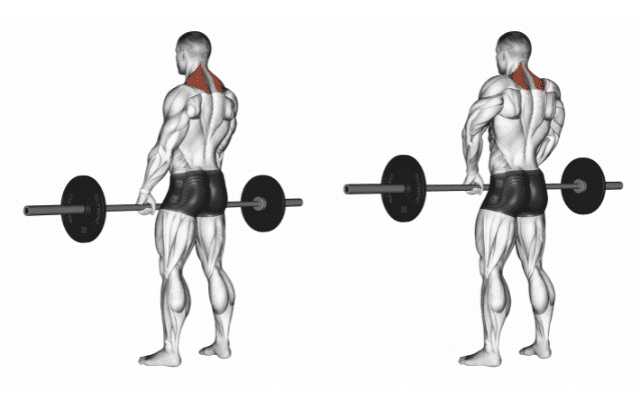Dumbbell Upright Row (How To, Muscles Worked, Benefits)
Dumbbell Upright Rows are a great upper-back exercise. They’re also a good supplemental movement for bigger Olympic movements like Snatches and Cleans.
In this guide, I’ll teach you how to do a DB Upright Row, what muscles this exercise works and a few alternatives if you’re unable to do upright rows with dumbbells.
How To Do Dumbbell Upright Rows
Equipment Needed
- Dumbbells
Step-by-Step Instructions
- Grab two dumbbells and start with them at arm’s length in front of the thighs, palms toward the body.
- Flex knees slightly and stand upright with good posture.
- Pull the dumbbells upward along the abdomen and chest toward the chin.
- At the top, the elbow should be higher than the wrist, and above the shoulders.
- Lower the bar dumbbells and under control to the front of the thighs.
- Do not ‘jerk’ or ‘rock’ the weight up and keep the dumbbells close to the torso thoughout.
Coaching Points
The biggest mistake I see, by far, with Dumbbell Upright Rows is swinging way too much to lift the weight.
A little swing is okay if you’re trying to grind out the last rep or two of a set, however, if you’re having to rock your torso for every rep then the weight is too heavy. Grab some lighter dumbbells and use proper form.
Benefits
This exercise can help to strengthen the muscles in the upper back, shoulders, and arms, and it also has several other potential benefits.
Some of the potential benefits of the Dumbbell Upright Row include increased upper body strength, improved posture, and increased hypertrophy.
Additionally, because the dumbbell upright row is a compound exercise that involves multiple joints and muscle groups, it can also help to improve overall coordination and balance.
How Many Reps?
Dumbbell Upright Row is a supplemental strength exercise. I generally program upright rows as 2 to 4 sets of 8 to 12 reps per set.
Muscles Worked
Dumbbell Upright Rows work the entire Trapezius as well as the Deltoideus and Brachialis. In plain English – the upper back, shoulders and biceps.
Dumbbell Upright Row Alternatives
If you’re unable to do dumbbell upright rows, for whatever reason, or you’re just wanting to mix up your workout a bit here are a few alternatives.
Barbell Upright Rows

If you don’t have dumbbells, Barbell Upright Rows can be a good alternative. The setup and the movement itself is basically exactly the same, only using a barbell in place of dumbbells.
Pro Tip: Barbell Upright Rows can be extremely uncomfortable for some lifters. If you experience any pain while trying to do them, opt for one of the other alternatives instead.
Band Upright Row
More similar to dumbbells, using a resistance band to do Band Upright Rows allows the lifter to find a movement path that is more comfortable for them.
Experiment slightly with the angles of the exercise to try and find where the movement feels best. If you find this Band Upright Rows to still irritate your shoulders, don’t do them. There are always other options for any exercise.
Shrugs

While not an exact substitution, Shrugs are another great upper back/trapezius exercise. Shrugs come in multiple variations as well – barbell or dumbbell and different grip widths on the bar all can change up the lift.
More Links and Info
Need more Upper Body Strength Exercises? I have a growing collection of guides in my Exercise Library – all available for free.

